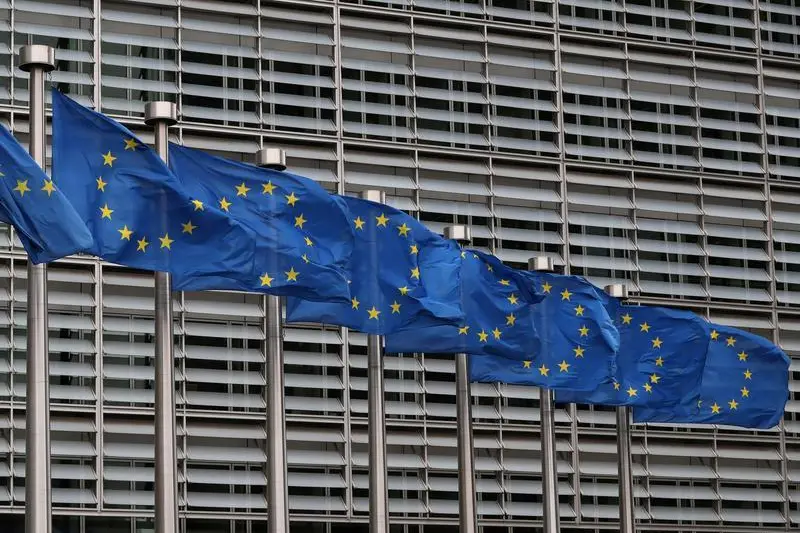PHOTO
In my last book, “To Dare More Boldly: The Audacious Story of Political Risk,” I lay out 10 rules to do political risk analysis right; 10 commandments for how to think ahead of the curve and analytically master our new, beguiling world.
The seventh precept is particularly useful in looking at the EU: To analyze a country correctly, know its place in the world and where it fits into the larger global order, based on a warts-and-all look at its strengths and its weaknesses. This, particularly the lion’s share of EU commentators — often more cheerleaders than analysts — seem entirely incapable of doing. A recent case in point was a Zoom call I was on for a leading European think tank.
A senior Democratic Party analyst and I were invited to give our opinions and then, as is the custom, we took questions. After speaking at great length about the emerging Sino-American bipolar structure of our new era at the superpower level, a series of plaintive queries came from our mainly European audience. “But what about Europe as a superpower?” Gently, kindly, as if we were dealing with a slightly dotty uncle, we both said that no, that wasn’t going to happen.
But the real question should be: How have European analysts been allowed to get by with wallowing in their delusions of grandeur for so long? Since time immemorial, there are three basic indices of power: Military prowess, economic wherewithal, and political clout. Looking in a rational way at all three, it is impossible to find any rationale whatsoever for the EU to be thought of as a superpower that is not merely a fevered dream.
On military matters, ambitious French President Emmanuel Macron has surely missed the obvious in continuing the perpetual European argument about whether future military outlays should be made primarily through the EU, or NATO, as is now generally the case. The ultimate point is not about structure; it is about the glaring and painful reality that the continent remains a military Lilliputian, which will continue to be the case whatever structure is dreamed up.
The facts are these: Of all the continental militaries, only the French can manage the full spectrum of missions, doing everything from high-end war fighting to low-end peacekeeping. Every single other EU military can, at best, only manage niche operations, though some (such as the Netherlands and Norway) do so very well.
In 2019, in NATO as a whole, only seven of the alliance’s then-29 (primarily European) members met the NATO commitment to spend 2 percent of their gross domestic product (GDP) on defense (the US, UK, Poland, Greece, Latvia, Lithuania, and Estonia). To pretend that any new institutional configuration will change the ingrained habits of pacifist European publics, however wrongheaded they may be, flies in the face of decades of recent history.
Economically, the pandemic has been hard on low-growth Europe, particularly its southern rim. A Japan-style deflationary spiral seems to be setting in there, with Greece (minus 2.3 percent), Italy (minus 0.9 percent), and Spain (minus .6 percent) all experiencing a monthly deflation rate in September.
Along with economic sclerosis, the south is awash with unsustainable debt. The OECD’s worst-case assessment for the end of 2021 finds Greece with an Olympian 229 percent debt to GDP ratio, Italy 192 percent, France 152 percent, and Spain 150 percent. Perhaps worst of all and incredibly, none of these countries has proactively put forward a convincing medium-term plan both to stimulate growth and then manage this avalanche of debt.
Nor is the EU as a whole riding to the post-pandemic rescue, which brings us to the bloc’s perennial political divisions. For a long while, the EU has been split north-south over economic issues and east-west over migration issues. The oversold €750 billion ($906 billion) European Recovery Fund is just the latest case of Brussels overpromising and under-delivering in policy terms.
The seemingly impressive top number is diluted, being split between 27 countries and doled out in smaller tranches until 2026 — hardly the recipe for a quick shot of economic adrenaline for the ailing south, which has been plagued by a year’s worth of lockdowns. Even worse, a good portion of the money (€360 billion) is only given out in loans, which countries from Italy to Portugal will not touch, as accepting them comes with significant limitations on individual countries’ political sovereignty.
But new political divisions further diminish even this less-than-meets-the-eye rescue. Poland and Hungary, both enraged by charges from the other EU members as to their fundamental political illiberalism, have been blocking final passage of the recovery fund (and the seven-year, €1.1 trillion EU budget besides) if the budget retained a clause making “rule of law” criteria a requirement for EU membership in terms of judicial and media freedoms, and gender rights. While a deal with the two recalcitrant countries has just been reached, this political logjam further slowed down an already glacial process.
Militarily weak, economically sclerotic, politically divided: This is the present reality of the EU. Rather than worrying about its dreamed-of superpower status, Brussels would do far better to see the world as it is, advance a bold policy program on all these fronts sooner rather than later, and safeguard the great power status it does possess.
- Dr. John C. Hulsman is the president and managing partner of John C. Hulsman Enterprises, a prominent global political risk consulting firm. He is also senior columnist for City AM, the newspaper of the City of London. He can be contacted via chartwellspeakers.com.
Copyright: Arab News © 2020 All rights reserved. Provided by SyndiGate Media Inc. (Syndigate.info).












